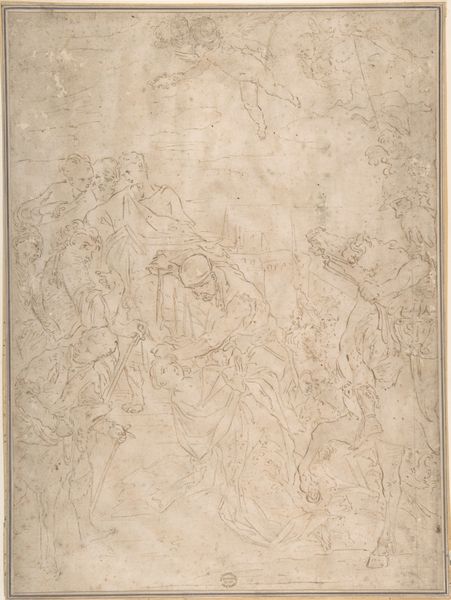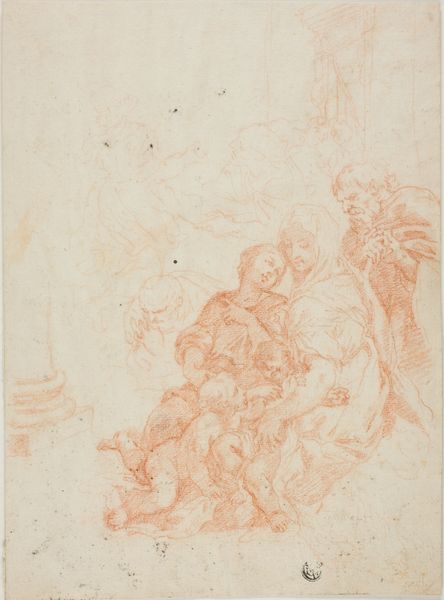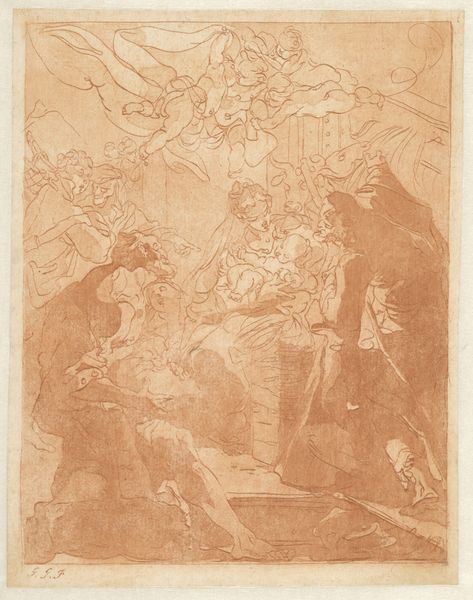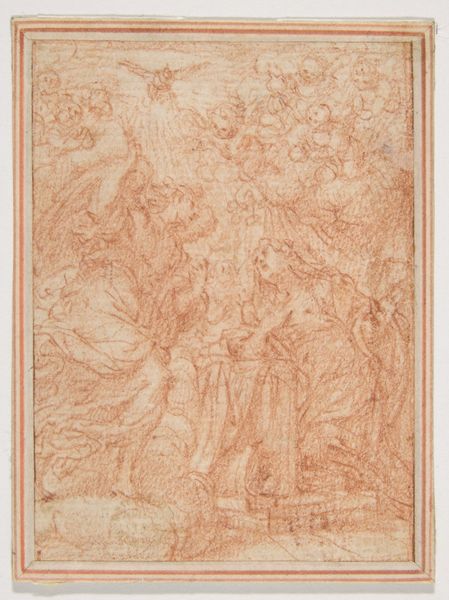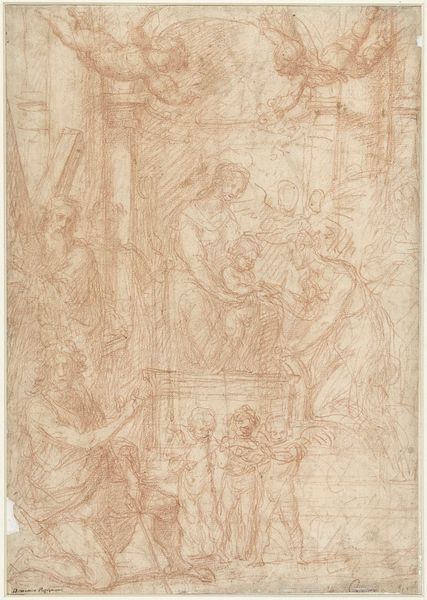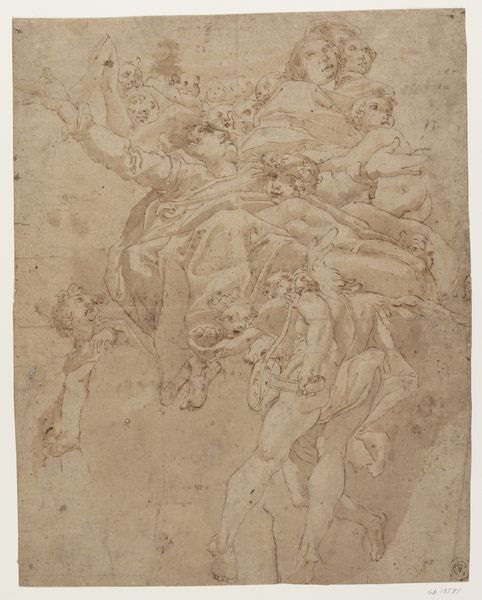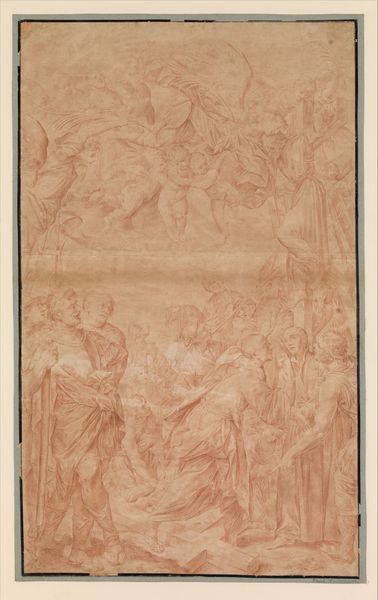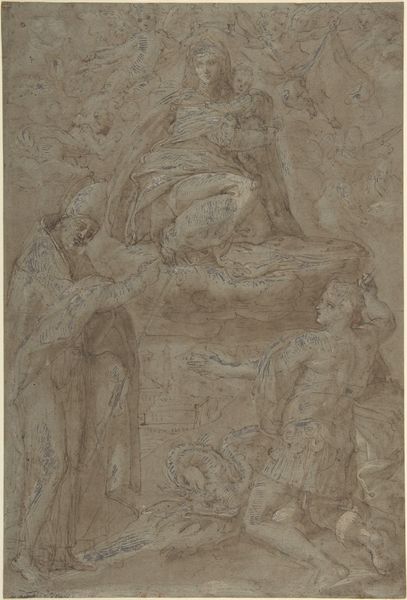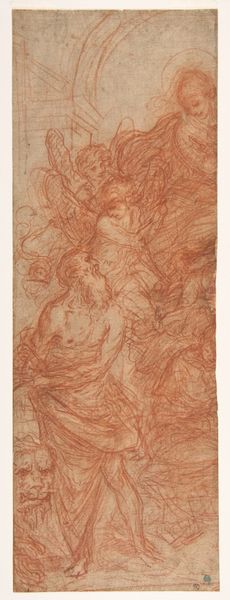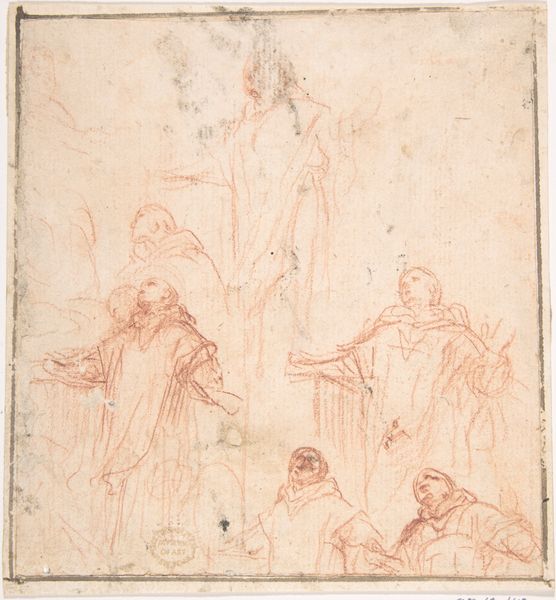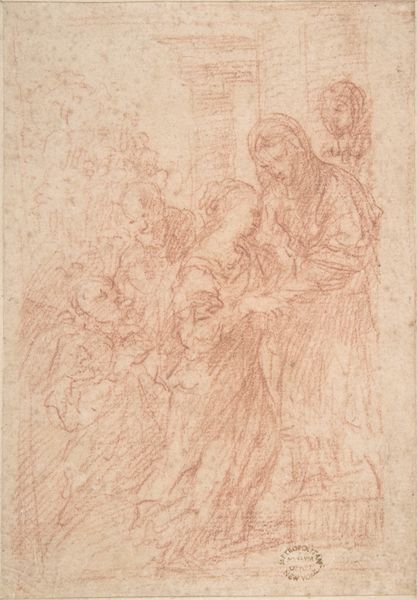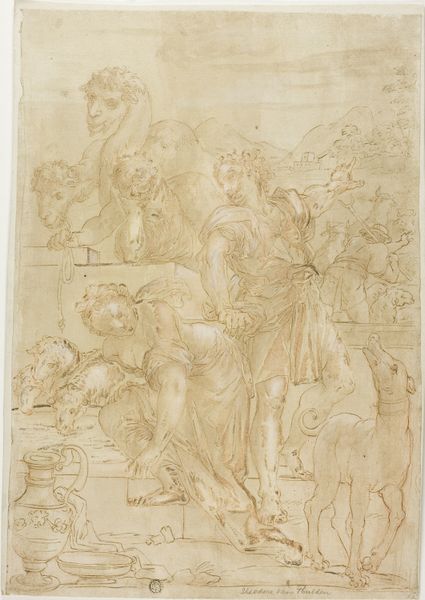
The Virgin Immaculate and Four Male Saints (Study for The Dispute over the Immaculate Conception) 1625 - 1713
0:00
0:00
drawing, oil-paint, dry-media, chalk
#
drawing
#
oil-paint
#
figuration
#
dry-media
#
chalk
#
history-painting
#
italian-renaissance
#
virgin-mary
Dimensions: 14 3/8 x 8 1/8in. (36.5 x 20.7cm)
Copyright: Public Domain
Editor: This drawing, "The Virgin Immaculate and Four Male Saints," by Carlo Maratti, probably dates from the late 17th or early 18th century. It's done in chalk and oil paint and depicts a heavenly scene. What immediately strikes me is the contrast between the clearly defined saints at the bottom and the more ethereal Virgin Mary floating above. What can you tell me about it? Curator: The Immaculate Conception was a significant point of theological debate. See how Maratti visualizes that hierarchy? The Virgin is literally elevated, surrounded by a radiant, divine space. Those below, likely important theologians, are engaged in discussion, maybe the very "dispute" hinted at in the title. Editor: So the hazy rendering of the Virgin and the more detailed saints reflect a visual representation of this spiritual order? It’s not just about artistic skill but about conveying meaning? Curator: Exactly. The Renaissance was all about establishing visual grammars that the culture would easily learn to interpret: Mary, wreathed in light and divinity, embodies an untouchable ideal. Consider the colors as well: The chalk allows for gradations of light that emphasize her transcendence. Editor: I hadn’t thought about the symbolic importance of the chalk medium itself, helping visualize a heavenly idea! It's interesting how artistic choices aren't arbitrary. Curator: Precisely. Even the composition guides our eye upwards, toward the divine. Editor: Thanks! I never realized how many layers of meaning could be embedded in something as seemingly simple as a preparatory sketch. Curator: It reminds us that images carry significant emotional and intellectual meaning. It shows how even studies offer a gateway to understanding beliefs and perspectives through symbolic codes.
Comments
No comments
Be the first to comment and join the conversation on the ultimate creative platform.
